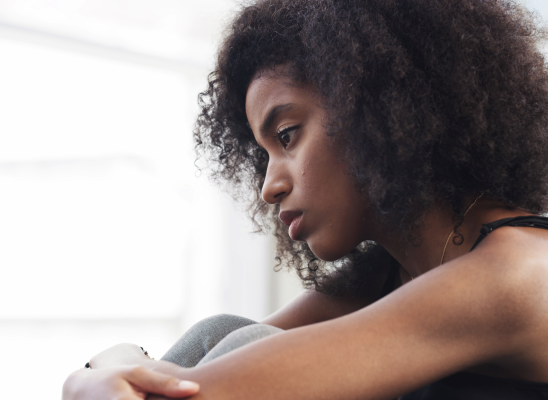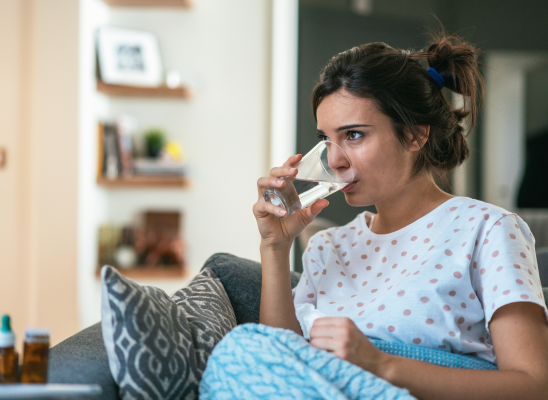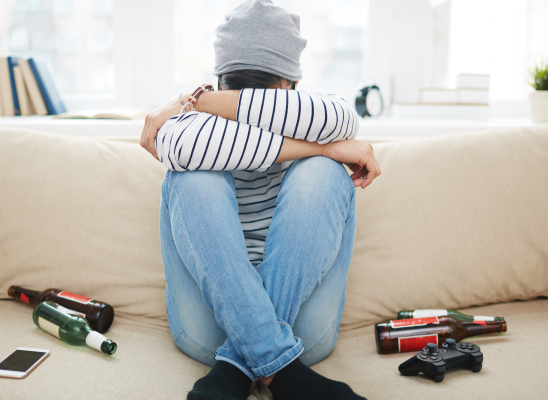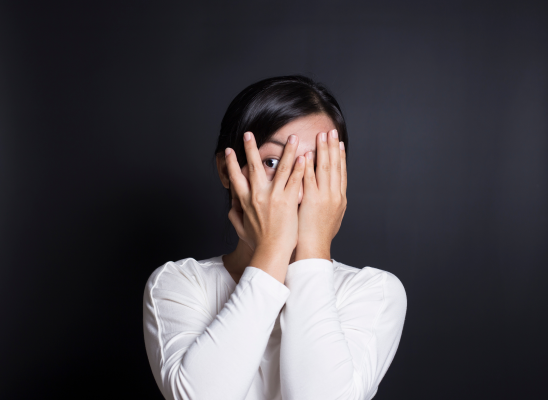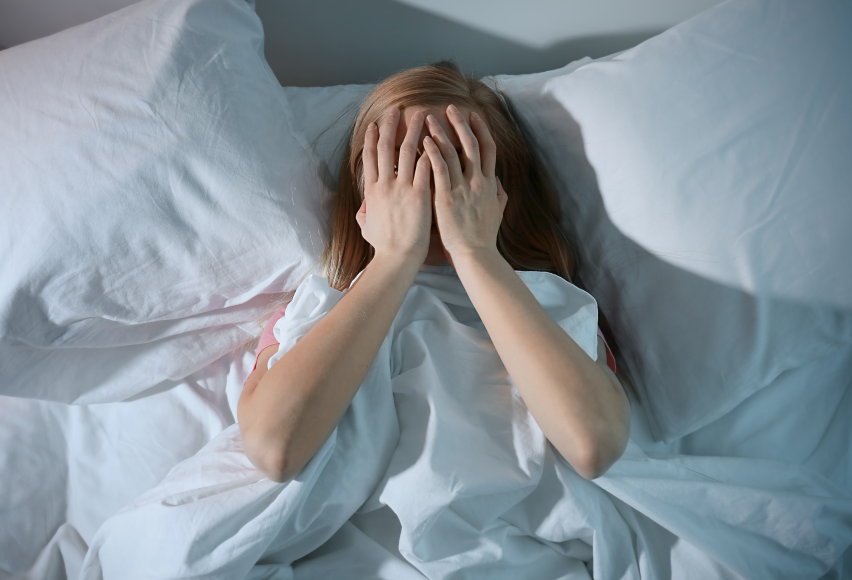
Online test
Find out the severity of your symptoms with this free online test
Obsessive-Compulsive Disorder (OCD) is often recognized for its mental and behavioral symptoms, such as intrusive thoughts and repetitive actions. However, OCD can also manifest through various physical symptoms that may be less obvious but equally impactful. Recognizing these physical signs is crucial for individuals who suspect they have OCD, those diagnosed with the condition, or their loved ones. This article explores common physical symptoms of OCD and offers strategies to manage them, supported by scholarly research.
What Is OCD?
OCD is a chronic mental health disorder characterized by:
Obsessions: Persistent, unwanted thoughts or urges that cause anxiety.
Compulsions: Repetitive behaviors or mental acts performed to alleviate the distress caused by obsessions.
These symptoms can interfere significantly with daily life, affecting work, relationships, and overall well-being.
Common Physical Symptoms of OCD
1. Muscle Tension and Physical Discomfort
The anxiety associated with OCD can lead to muscle tension, resulting in headaches, jaw pain, or general body aches. These physical manifestations are often a direct response to the mental strain of managing obsessive thoughts and compulsive behaviors. Pozza et al. (2019) found that individuals with OCD report lower perceived physical health status compared to the general population, demonstrating the physical toll of the disorder.
2. Sleep Disturbances
Sleep problems are very common in people with OCD, with nearly half of patients reporting issues such as trouble falling asleep, staying asleep, or waking up feeling unrested. Research has shown that these sleep disturbances are often linked to the severity of OCD symptoms, how resistant the disorder is to treatment, and even the age when OCD first appears. Sleep issues are also connected to difficulties in controlling thoughts and impulses, even in people with subclinical OCD symptoms (Segalàs et al., 2021). While some researchers suggest that these sleep problems might be partly due to co-occurring depression, they remain an important concern to address when treating OCD.
3. Gastrointestinal Issues
The gut-brain connection means that anxiety can manifest physically in the digestive system. People with OCD may experience nausea, stomach cramps, diarrhea, or a loss of appetite, all of which can be triggered by heightened stress levels. Research by Witthauer et al. (2014) suggests that individuals with OCD have higher rates of physical diseases, including gastrointestinal issues, compared to the general population.
4. Skin Irritations
People with OCD who engage in ritual handwashing or frequent use of cleaning chemicals often develop skin irritation, dryness, cracking, or even hand dermatitis. A recent study found that individuals with washing compulsions frequently present to dermatology clinics with skin changes due to the repetitive nature of their behaviors (Wong & Oakley, 2019). These skin issues aren’t just cosmetic—they can cause pain, bleeding, increased risk of infection, and further distress that can reinforce the OCD cycle. If you notice your skin becoming sore or damaged because of repeated washing or cleaning rituals, it’s a strong signal to bring it up with your therapist or doctor as part of your OCD care.
5. Repetitive Movements or Tics
OCD can sometimes lead to motor tics—sudden, repetitive movements like blinking, head jerking, or shoulder shrugging. These tics are often performed in response to obsessive thoughts and can be distressing for those who experience them. Drummond et al. (2012) observed that patients with severe OCD frequently have significant physical health problems, including motor tics.
Coping Strategies for Physical Symptoms
1. Cognitive Behavioral Therapy (CBT)
CBT, particularly Exposure and Response Prevention (ERP), is considered the gold standard in treating OCD. ERP involves gradually exposing individuals to feared situations while preventing the accompanying compulsive response, which helps reduce both mental and physical symptoms over time. The National Institute of Mental Health (2021) emphasizes the effectiveness of CBT in treating OCD.
2. Mindfulness and Relaxation Techniques
Practicing mindfulness meditation, deep breathing exercises, or progressive muscle relaxation can help manage the physical symptoms of anxiety that often come with OCD. These techniques encourage the body to slow down, promoting a sense of calm and helping to reduce muscle tension, rapid heartbeat, and gastrointestinal discomfort that can occur when anxiety runs high. Over time, regular relaxation practice can make it easier to notice intrusive thoughts without reacting to them immediately, which is an important part of managing OCD symptoms.
Mindfulness-based approaches also help train attention, allowing people to shift focus away from compulsive urges and toward the present moment. Studies have shown that mindfulness and relaxation strategies can reduce stress levels and improve emotional regulation, both of which can ease the intensity of OCD-related distress.
3. Regular Physical Activity
Engaging in regular exercise can help alleviate muscle tension, improve sleep quality, and reduce anxiety levels. Activities like walking, yoga, or swimming can be particularly beneficial for individuals with OCD. A study by du Mortier et al. (2025) found that “higher levels of physical activity were significantly associated with lower OCD symptoms,” suggesting that movement can play a meaningful role in managing the disorder.
Exercise helps regulate stress hormones and boost mood through the release of endorphins. It also provides a healthy outlet for nervous energy that often accompanies obsessive thoughts. Establishing a consistent routine—such as a daily walk or short yoga session—can create structure and predictability, which many people with OCD find comforting. Even light to moderate movement can make a difference, especially when combined with other treatments like therapy or medication.
4. Adequate Sleep Hygiene
Getting enough quality sleep is often overlooked, but it’s incredibly important for people living with OCD. Research shows that individuals with OCD tend to experience poorer sleep quality, take longer to fall asleep, and have more disrupted sleep patterns than those without the disorder. These problems aren’t just uncomfortable—they can make obsessive thoughts and compulsive behaviors worse over time.
In a 2021 study published in BMC Psychiatry, researchers found that people with OCD had delayed sleep times and poorer overall sleep compared to healthy controls (Lochner et al., 2021). The study also showed that higher levels of anxiety and depression play a major role in how much OCD symptoms interfere with sleep. Addressing anxiety and improving sleep habits—like sticking to a regular bedtime, limiting screen use before bed, and creating a calming nighttime routine—can support overall OCD recovery.
5. Medical Consultation
If physical symptoms related to OCD persist or worsen, it’s crucial to consult a healthcare professional. They can help rule out other medical conditions and may recommend medications to manage OCD symptoms. Selective serotonin reuptake inhibitors (SSRIs) are commonly prescribed for this purpose. SSRIs are considered the first-line pharmacological treatment for OCD and have been shown to be effective in reducing symptoms.
Beaulieu et al. (2019) developed an evidence-based algorithm for treating adults with OCD, emphasizing SSRIs as the primary medication choice. However, SSRIs may not work for everyone. In such cases, healthcare providers may combine medication with cognitive behavioral therapy, including ERP techniques. This combined approach has been shown to be more effective than either treatment alone (Gershkovich et al., 2017).
Final Thoughts
Experiencing physical symptoms as part of OCD can be challenging, but it’s important to remember that these symptoms are valid and treatable. If you or someone you know is struggling with OCD, reaching out for help is a crucial first step toward recovery. You don’t have to face this alone.
For more information and support, visit STOPOCD.com. Seeking help is a sign of strength, and with the right resources and support, managing OCD and its physical symptoms is entirely possible.
References
- Pozza, A., Ferretti, F., & Coluccia, A. (2019). The perception of physical health status in obsessive-compulsive disorder: A systematic review and meta-analysis. Clinical Practice & Epidemiology in Mental Health, 15, 75–93. https://doi.org/10.2174/1745017901915010075
- Segalàs, C., Labad, J., Salvat-Pujol, N., et al. (2021). Sleep disturbances in obsessive-compulsive disorder: Influence of depression symptoms and trait anxiety. BMC Psychiatry, 21, 42. https://doi.org/10.1186/s12888-021-03038-z
- Witthauer, C., et al. (2014). Physical diseases among persons with obsessive-compulsive symptoms. Psychiatry Research, 220(1–2), 102–108. https://doi.org/10.1016/j.psychres.2014.07.010
- Wong, V., & Oakley, A. (2019). Compulsive hand-washing — extra information. DermNet NZ. https://dermnetnz.org/topics/compulsive-hand-washing
- Drummond, L. M., et al. (2012). Physical complications of severe, chronic obsessive-compulsive disorder. Journal of Affective Disorders, 136(3), 1113–1116. https://doi.org/10.1016/j.jad.2011.10.043
- National Institute of Mental Health. (2021). Obsessive-compulsive disorder. https://www.nimh.nih.gov/health/topics/obsessive-compulsive-disorder-ocd
- du Mortier, J. A. M., van Balkom, A. J. L. M., Twisk, J. W. R., van Oppen, P., & Visser, H. A. D. (2025). The bidirectional relationship between severity of obsessive-compulsive symptoms and lifestyle factors in patients with obsessive-compulsive disorder: A contemporaneous and prospective analysis. Frontiers in Psychiatry, 16, 1552691. https://doi.org/10.3389/fpsyt.2025.1552691
- Beaulieu, A. M., Tabasky, E., & Osser, D. N. (2019). The psychopharmacology algorithm project at the Harvard South Shore Program: An algorithm for adults with obsessive-compulsive disorder. Psychiatry Research, 281, 112583. https://doi.org/10.1016/j.psychres.2019.112583
Gershkovich, M., Wheaton, M. G., & Simpson, H. B. (2017). Treatment strategies for treatment-resistant obsessive-compulsive disorder. Psychiatric Clinics of North America, 40(2), 281–295. https://doi.org/10.1016/j.psc.2017.01.005
Online test
Find out the severity of your symptoms with this free online test
Start your journey with StopOCD
Take control of your life and find freedom from OCD through professional therapy and evidence-based cognitive behavioral techniques.
Start Now
